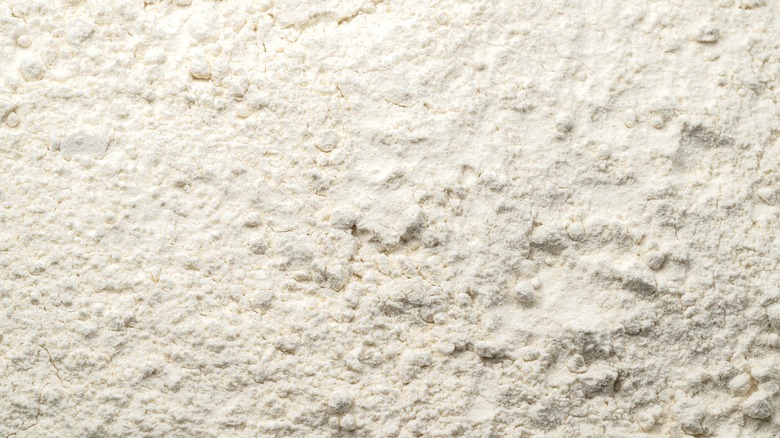Why 00 Flour Is The Darling Of Italian Pizzerias
Tipo 00, doppio zero, or 00 flour is the best flour to use for Italian-style pizza. The elasticity, minimum water requirements, and subtle flavor from durum wheat make 00 flour the crown jewel of baking from a culture world-renown for its grain products
Much like masa harina or Szechuan peppercorns, 00 flour has historically only been accessible by chefs through specialty contacts. But, again, like masa harina and Szechuan peppercorns, the globalization of the modern American palate has led supermarket changes to start stocking these items for purchase by everyday home cooks.
And for those who love to make pizza at home, this has been the greatest thing to happen since the average consumer gained access to San Marzano tomatoes. Like any baked good, the secret to a high-quality pizza lies in the crust. While there are over a dozen types of pizza popular in America, every pizza begins with the same step: creating the perfect crust.
To make a properly crisp but airy thin-crust pizza, there's nothing in the world quite like 00 flour. From the fineness of its grind to the softness of the wheat used in its manufacturing, this flour truly is the darling of any Italian pizzeria.
From farm to shelf
00 flour is most often made from durum, which has an iconic yellow coloring and slightly sweet flavor. If you've ever seen traditional pasta or pizza being made, you'll notice that the dough isn't the bone-white color of bleached flour dough. However, pasta dough is typically made from semolina flour, which is a type of significantly coarser durum flour.
Durum wheat is ideal for Italian farms thanks to its heat and drought resistance. However, the wheat was historically considered a "hard wheat" thanks to an extremely firm kernel. It was only recently genetically modified to soften the kernel, reducing the amount of energy required to mill it into flour.
The reduction of effort required to mill the flour has made it much easier to grind it into a finer grade. And with finer flour comes airier, crispier pizza crusts. This combination of circumstances brought 00 flour into the culinary limelight, making it any Italian pizzeria's first choice when creating pizza dough.
While American pizza is nothing new, the widespread love for homemade pizza is. As with any hobby, the spread of making pizza at home created a cult of home pizzaiolos who wanted to perfect each and every step of the pizza-making process. This demand, plus innovations in large-scale farming, has brought 00 flour to store shelves across the country.
From kitchen to the table
Once in the kitchen, the value of 00 flour shines. In Europe, they grade flour from two to 00, with two being the coarsest and 00 being the finest. The finer the flour is, the less water it requires to form an elastic, workable dough. And less water means that when the dough bakes, it forms a significantly crispier final product.
By American standards, 00 flour would be closest to "bread flour," meaning it has a gluten content of between 12 and 14%. This high gluten content gives pizza dough a strong but elastic structure that prevents the dough from tearing while it's worked into the right shape.
Much like durum wheat, 00 flour stands up to heat well. Commercial pizza ovens reach much higher temperatures than the average home oven is capable of reaching. To get a thin-crust pizza with just the right amount of char, Italian pizzerias turn to the magnificent 00 flour.
After baking in a scorching hot oven, the final product is crisp on the outside with plenty of air bubbles on the inside to give the pizza crust just enough volume and the perfect level of chewiness. Whether you're a veteran pizzaiolo or want to learn how to make pizza dough from scratch at home, 00 flour is the best flour to use.



